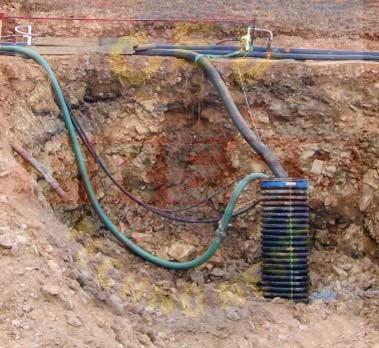TECHNIQUES FOR IMPROVEMENT OF GROUND IN CIVIL ENGINEERING
Ground improvement is typically a method or technique used for the enhancement of ground which is in a poor condition or a disturbed state. Various geotechnical techniques are used to re-engineer the existing soil to improve its characteristics as well.
Soil improvement is usually done to meet the requirements of the type of structure that is to be constructed on that particular piece of land.
Ground improvement is carried out for various objectives: to improve bearing capacity and reduce settlement of soft ground, prevent earthquake liquefaction, control groundwater, stabilize excavation bottom, prevent deformation of surrounding ground, or clean up contaminated ground.
REASONS FOR GROUND IMPROVEMENT
Ground improvement is carried out to:
- prevent excessive settlements of the surface of the reclamation area when structures like buildings, roads and other foundations are loaded on it;
- improve shear strengthof the fill and subsoil to ensure sufficient bearing capacity of the foundations and/or sufficient stability of the slopes;
- increase the densityof the fill mass and/or subsoil to prevent liquefaction; and
- improve soil permeabilityin order to increase drainage capacity.
GROUND IMPROVEMENT: BENEFITS
Ground improvement methods enhance weak compressible soils as well as unsuitable soils and contaminated soils, reforming them into different soils which are stronger and more durable.
Benefits of ground improvement include:
- A quicker project time as design and implementation are fast
- Reduced or no disposal costs as hardly any waste
- Easier sub-structure design and construction
- Effective on various soil types
- Equipment designed to meet demanding needs of different sites
Different Methods For Ground Improvement
These are various techniques available for ground improvement. The methods of ground improvement are categorized based on the types of soil. They are as follows:
Pre-compression
Pre-compression is a method of ground improvement used for soils like clay and silt. It is also known as preloading or surcharging. In this method, the dedicated land area for construction is covered with a surcharge, temporarily before construction. This surcharge is filled upto a suitable height to cause pre-compression of the soil below.
Grouting and injection
It is a process of ground improvement which is attained by injecting fluid-like material into the subsurface of soil or rock. Grouting is valuable in foundation work before construction, during construction, and after construction. Before construction grouting is used to control water problems, infill voids, to control settlement, and to increase soil bearing capacity. During construction, grouting is used to control groundwater flow to stabilize loose sand against liquefaction, to provide adequate lateral support and after construction, it is used to reduce machine foundation vibrations and to eliminate new seepage.
Vibration methods
Vibration methods are used in any ground improvement techniques which could bring in deformation and displacement resulting in densification. Cohesionless soils get densified largely by fracture and reorientation of the grains. Static forces are not effective in this process. Different types of vibration methods are Vibro-compaction, Vibro-displacement compaction, Vibroflotation, etc.
Ground Freezing Method
Ground freezing is the use of refrigeration to convert in-situ pore water to ice. The ice then acts as a cement or glue, bonding together adjacent particles of soil or blocks of rock to increase their combined strength and make them impervious. The ground freezing considerations are Thermal analysis, Refrigeration system geometry, Thermal properties of soil and rock, freezing rates, Energy requirements, Coolant/ refrigerant distribution system analysis.


